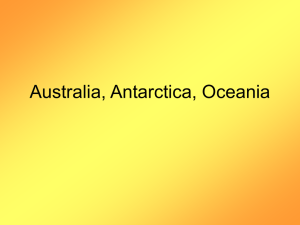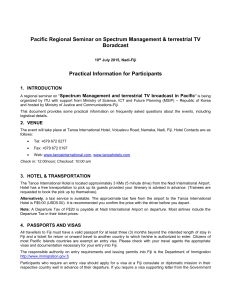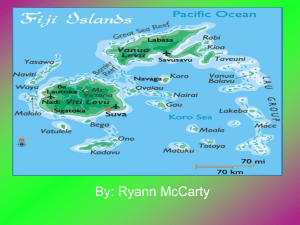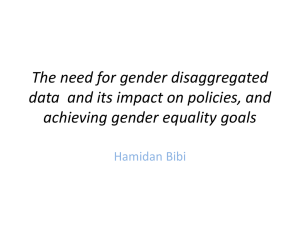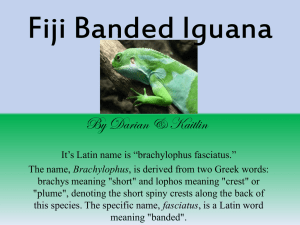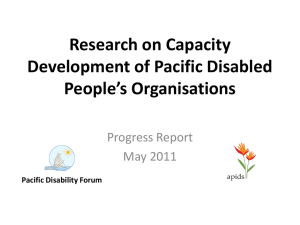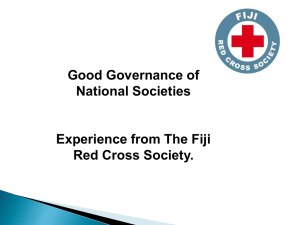Descendants of the Girimitiyas (Fiji Indian)
advertisement
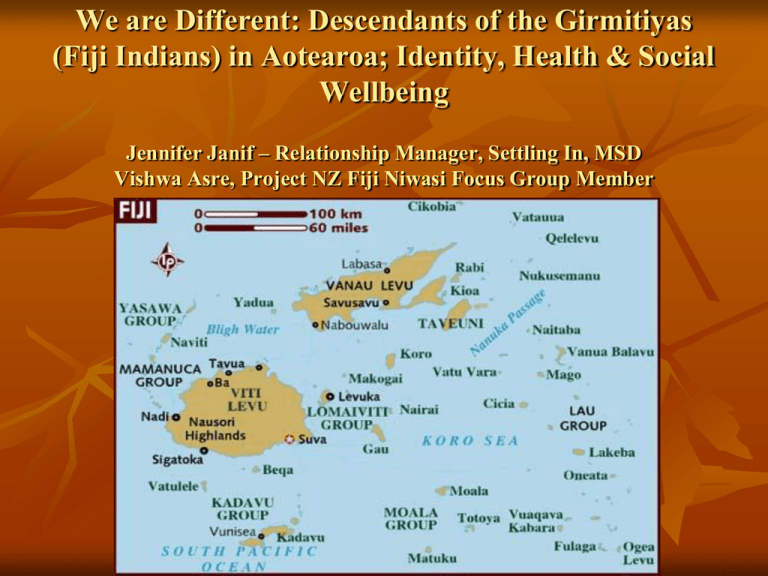
We are Different: Descendants of the Girmitiyas (Fiji Indians) in Aotearoa; Identity, Health & Social Wellbeing Jennifer Janif – Relationship Manager, Settling In, MSD Vishwa Asre, Project NZ Fiji Niwasi Focus Group Member Background Fiji was first settled by Lapita people between 3,500 – 1000BC Fiji became a British colony in 1874 Sir Arthur Gordon in 1879 introduced the Indian Indentured Labour System to Fiji 14th May 1879 – arrival of first boatload of 464 Indians on ship Leonidas to the shores of Fiji The Indenture System Recruitment of Indians to work on sugar plantations and processing plants in overseas colonies Often deceptive methods used by recruiters False promise of work as soldiers, policemen, clerks and teachers to recruit the more militant and strong Punjabis, Pathans and Rajputs Calcutta, Madras and Bombay were the holding centres 5 year contracts which could be renewed for another five years Ratio of 100 men – 40 women Ship Brothers “The close face to face relationships between emigrants during the voyage led to strong ties amongst them. The kincaste group in India was to be replaced by jahaji bhais or literally ship brothers in the lines of Fiji” (Source : Violence of Indenture in Fiji by Vijay Naidu, 2004, p. 30) Indenture in Fiji Labourers sent to plantations all over Fiji A difficult and violent process “Sardars never hit anyone. It was the Kulumbars(overseers) who were bad, especially the Australian; the New Zealanders took pity” (Naidu, 2004, p. 49) Indenture in Fiji Labourers sent to plantations all over Fiji A difficult and violent process “In 1907, there was a disturbance at Labasa Plantation , sixty five Punjabis and Pathans refused to work as they had not agreed in India to work as field labourers. The whole group armed with shovels, knives and hoes attacked the police who numbered 10 constables and a European officer (Naidu 2004, p.49) Development of Fiji Hindustani Indians spoke Hindi, Urdu, Tamil, Malayalam, Punjabi and Telegu whilst English was spoken by overseers Fiji Hindustani developed by overseers to facilitate communication with labourers The South Indians struggled as they didn’t understand Hindi – also were minority in comparison to the majority from the north Migration pre and post 1987 coup 1986 visa-free entry to New Zealand 14th May 1987 first coup in Fiji led to an exodus of 3rd, 4th and 5th generation Fiji born Indians Migration to Australia, New Zealand, UK, USA and Canada In NZ, the Fiji Indian population is approx 40,000 and most have settled in Auckland Identity in New Zealand Pacific Indian or South Asian!!!!!!!! “Many Indians distrust Fijian or Sri Lankan Indians. They do not consider them “real Indians”. The way they worship and interact is very different” (Source : Settling In Albany Migrant Community Social Services Report March 2010, p.78) Project NZ Fiji Niwasi 2009 Lack of awareness about Fiji Indians historical background amongst service providers leads to stigma and discrimination from wider South Asian communities in New Zealand Project NZ Fiji Niwasi 2009 Group of concerned Fiji Indian professionals from health, social sector and community leaders got together in early 2009 as increasingly Fiji Indians were featuring in the negative stats of health, social & justice system and law enforcement Collaboration between Settling In, MSD, Auckland District Health Board, Umma Trust, Richmond Services and Community Groups inclusive of religious, sports and cultural Research Method Researchers conducted community consultations through six focus group interviews Community settings in Central and South Auckland from June to November 09 Sample mix - separate focus groups for older people, youth, women, etc. Findings Community identified a range of unmet health and social needs including support for Positive ageing for seniors family violence prevention, parenting skills for families in the context of NZ society, positive identity formation for youth from Fiji Indian backgrounds High rates of diabetes and cardiovascular disease were identified as a priority community health issue Conclusion First community consultation on the health and well-being of Fiji Indian community members conducted in New Zealand Further in-depth health and social needs assessment to be undertaken 2010 Recommendations Fiji Indians are included in the South Asian group which has significant diversity in language, religion and culture Continue awareness and advocacy for appropriate support by services providers for clients eg. use of Fiji Indian interpreters Consultation with members/professionals of Fiji Indian community for policy development, design and successful implementation of preventive workshops in the health, social and other sectors
